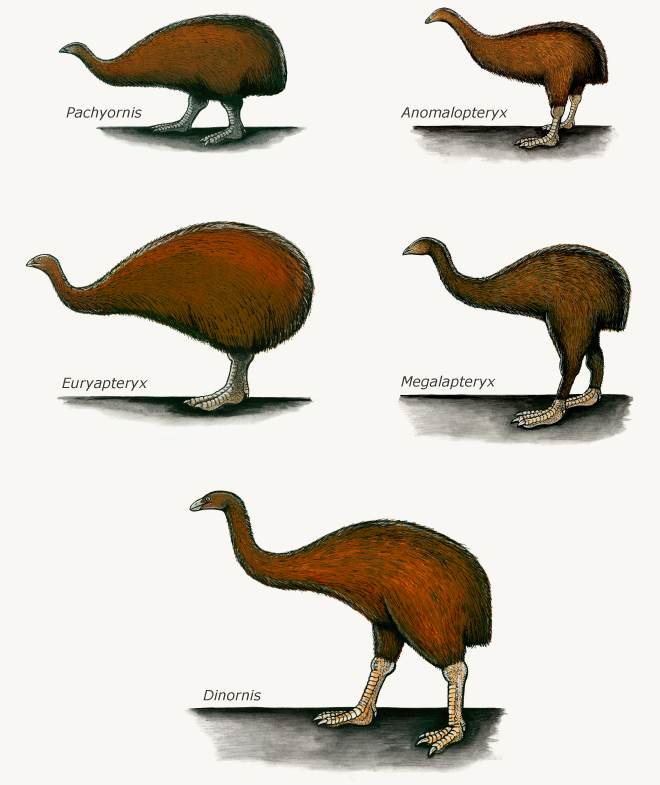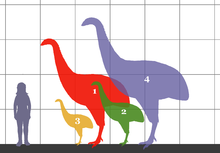Sidestep: The Moa
- IJ
- Oct 5, 2016
- 3 min read
When the Polynesian immigration's occurred, Moa were plentiful in what is now known as New Zealand. There were thousands of them but within a short time they were all wiped out. The early Polynesian immigrant were referred to as The Moa Hunters...those of the early archaic age (even though their tools were inferior to those of the islands they came from). It is more likely that the earliest inhabitants already hunted a few Moa but those now known as Maori made Moa a main source of food while they sorted out crops and tired to adapt to new life in a different land. After all, it is well recorded that the earliest Polynesian that landed at Wairau were in poor shape physically and nutritionally. Considering those here before were known as gatherer's more than hunters, they would have seen them on a daily basis for hundreds of years.

These amazing creatures roamed every conceivable corner of these two main islands and existed as nine types as shown below. Unfortunately the Moa was wiped out by those who knew nothing of sustainability in the same way European whalers were ignorant about whales by killing females thus ending their own fortunes. It seems man, regardless of race, colour or advancement in technology is as ignorant at sustainability as everyone else.
These amazing birds are similar to Emu’s and Cassawary's but were unique to NZ. There were nine species of flightless Moa endemic to New Zealand. The two largest species, Dinornis robustus and Dinornis novaezelandiae, reached about 3.6 m (12 ft) in height with neck outstretched, and weighed about 230 kg (510 lb). When Polynesians settled New Zealand around CE 1280, the Moa population was about 58,000. It took between 20-100 years to wipe them all out.
Their closest relatives have been found by genetic studies to be the flighted South American tinamous. The nine species of Moa were not the only wingless birds in the land for Kakapo, Kiwi and a now extinct Goose also shared the islands. Moa were the dominant herbivores in New Zealand's forest, shrub-land and sub-alpine ecosystems for thousands of years, and until the arrival of the Māori were hunted only by the Haast's eagle.
Before the arrival of human settlers, the Moa's only predator was the massive Haast's eagle. New Zealand had been isolated for 80 million years and had few predators prior to human arrival, meaning that not only were its ecosystems extremely fragile but the native species were ill equipped to cope with human predators. The Māori arrived sometime before CE 1300, and all Moa were soon driven to extinction by hunting and by habitat reduction due to forest clearance. In fact massive areas were burned in the South Island in the desperation to flush out Moa. So much for the real art of hunting...the early arrivals must have been desperate for food - or greedy.

By 1445, all Moa had become extinct, along with the Haast's eagle which had relied on them for food. There are old stories of the eagle taking small children, we guess in desperation for the lack of it's common prey until they too went the way of the dinosaur. Recent research using carbon-14 dating of middens strongly suggests that the events leading to extinction took less than a hundred years, rather than a period of exploitation lasting several hundred years, which is what had previously been hypothesized.
There are few old depictions of Moa in cave drawings except this one shown below. Why it is not well known we have no idea but exists in a limestone rock shelter at Maungati in South Canterbury.

There have been quite a few reports of moa sightings over the years, especially in the earlier years of European colonization. Some scholars believe these indicate a post-colonial date of extinction. The greatest period of sightings was from 1850 to 1880, after Moas had received significant scientific and popular attention; not one of the sightings occurred prior to the original publication of information about Moas. This is the same phenomena that occurs with flying saucers once the movies made the idea of flying saucers popular - soon people were seeing them everywhere. This same process had Moa sightings occur all over the country yet prior to knowing about Moa, no one had ever seen one alive.
Below is a selection of photo's drawing and depictions of Moa, skeletons and even a set of footprints discovered after a river bank was washed clear of soft mud exposing a hardened layer below.















































































Comments